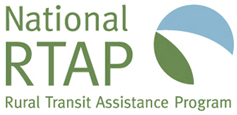Marketing Toolkit
RESOURCES > TOOLKITS
Marketing Toolkit
How-to Guide For Marketing Transit
Marketing Tools and Templates
Other Resources
Passenger Guide Brochures
Jump down to:
Canva Templates
Whatever type of service you operate, a printed passenger guide is an important companion to your website and a key marketing tool. A printed guide offers several advantages. It appeals to passengers who are less tech-savvy, it has the potential to build awareness of the service through distribution within the community, and it allows for easy display of maps and schedules in a “take-along” format.
Passenger Guide Tips
A passenger guide for a fixed-route service should include:
- A route map or maps showing all routes with bus stop locations, landmarks, and key destinations clearly noted
- Schedule information for each route
- How-to-ride information, including fares, fare media (such as tickets and passes), how to identify a bus stop, and any other information specific to your service type (i.e., how to request a deviation, how to apply for paratransit certification)
- Contact information, including a website address and reference to Google Maps trip planning, if that is available
A passenger guide for a demand-response service (including dial-a-ride and microtransit) should include:
- A map showing the area your system serves, with landmarks and key destinations
- Hours of service
- Eligibility requirements, if any
- How to make a reservation
- How-to-ride information, including fares, fare media, connecting services, and any other information specific to your service type, such as cancellation policy.
If you operate multiple services or routes, you will need to decide whether to provide a single comprehensive passenger guide that includes information about all your services, or individual guides for each service or route. To make that decision, consider these questions:
- Do you want your riders to use your various services in combination, for example, transferring from one route to another or from demand-response to fixed-route? If yes, then a comprehensive guide will help riders see how the system works as a whole.
- Do your individual services target different market segments or communities, with little crossover in ridership? If yes, then individual guides for each service will be more effective as riders won’t have to wade through irrelevant information to find what they need.
The following are some key things to consider in developing a passenger guide. These design principles have been incorporated into the templates that are included as part of The Marketing Toolkit.
- The guide must be clear and easy to understand. If the potential rider thinks the guide is too hard to read, they will think riding the bus is difficult.
- Use font sizes that are easily legible to most people. If your primary target market is older adults, use 12- to 14-point font size.
- Use color to make maps and schedules easier to read and reference.
- If you have a significant non-English speaking population in your community, either make your guide bilingual or have a version of the guide in the alternate language. Click here for more information on communicating with limited-English-proficiency (LEP) populations.
Passenger guides often can be designed to be used in two ways: folded as a rack brochure on a bus or in another display fixture, or flat, as a poster. Designing your guide to work both as a brochure and poster will save costs on printing.
Information Hierarchy
In the context of information design, hierarchy refers to creating an order or flow to how information is read. Think about what the first piece of information is that a user might need, then the second, third, etc. For instance, when looking at timetables, a user usually needs to first find the correct timetable for the route and the day of week, so those might be the largest or most bold texts on the timetables. Next, they might have to distinguish between a northbound and a southbound schedule, so that might be the next piece of info and the next largest or boldest. Then they might need to find timepoints, then trip times.
Think about this flow of how information is read, whether it be a map, timetable, how-to-ride information, fares, or any other information.
Consider the Rider’s Next Steps
In any passenger guide, it’s useful to include enough information for a potential customer to be able to take their first ride. This means that you have to think about all of the information that a customer is going to need: fares, how to pay, how to catch the bus (do you have bus stop signs, or can they catch the bus at any safe location along a route?).
When designing a passenger guide, look at the guide and think about what a potential rider’s next steps would be if they want to take a ride. Do they have all the information they’ll need?
Canva Templates
Dial-a-Ride, Demand-Response Guides, or General Brochures, Letter-size (8.5” x 11”)
These could be used for any general information brochure or schedule. For information on the terms “bleed” and “no bleed,” see the
Printing Information page.
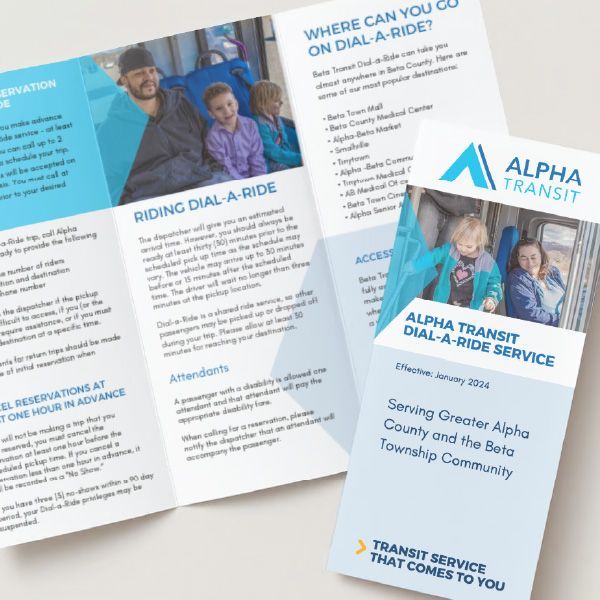
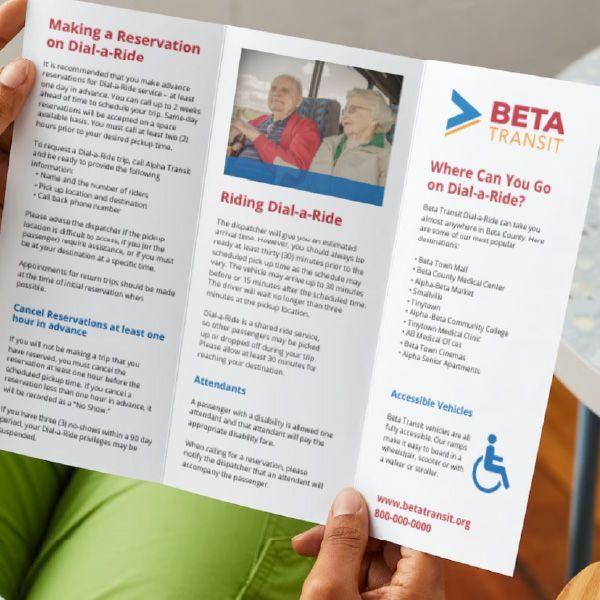
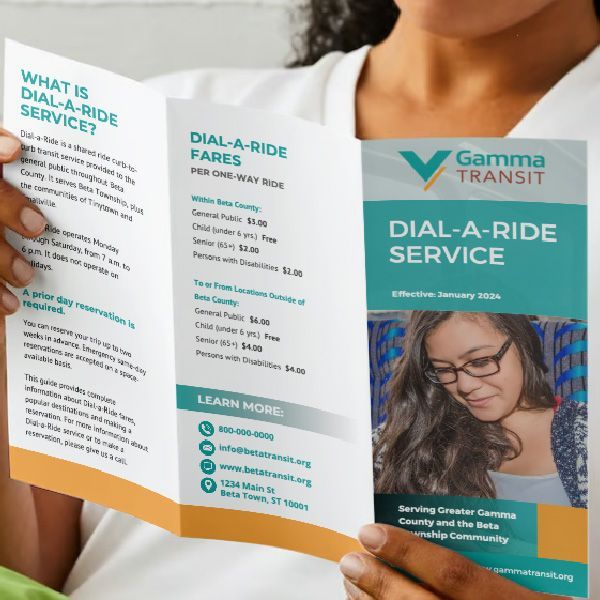
Rider Guides, Letter-size (8.5” x 11”)
With map and schedules. Good for single routes or small systems.
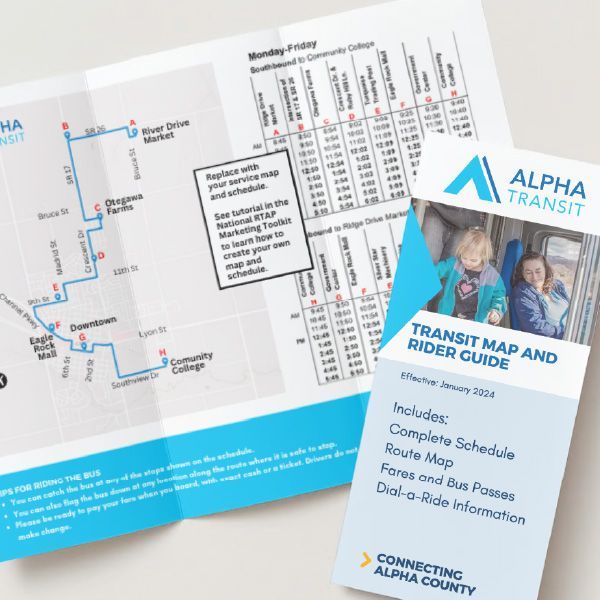
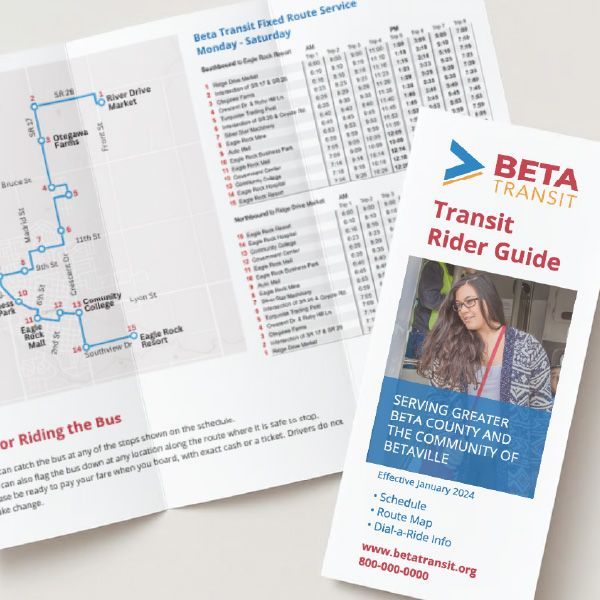
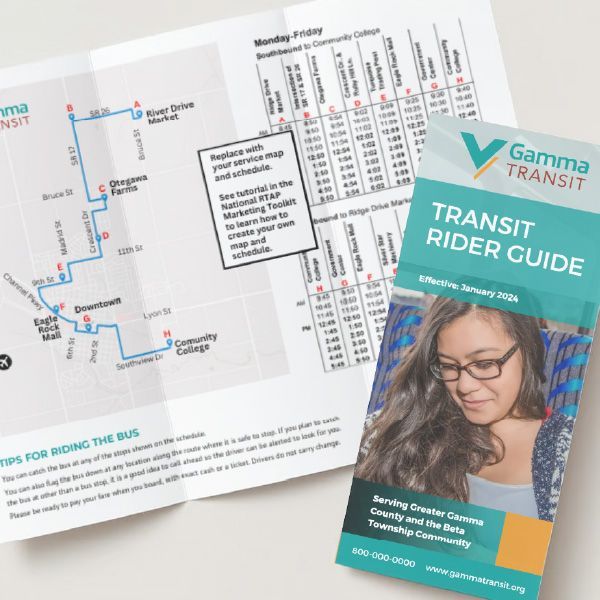
Rider Guides, Legal-size (8.5” x 14”)
With route map and schedules. Good for single routes or small systems, when you need more space than the letter-size rider guides above.
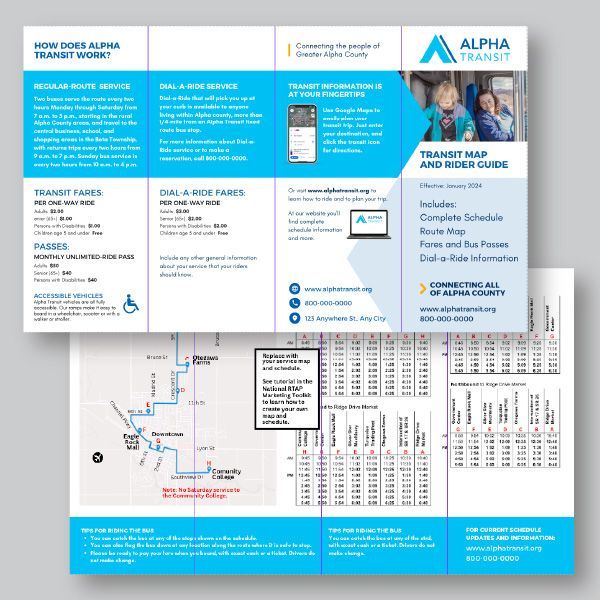
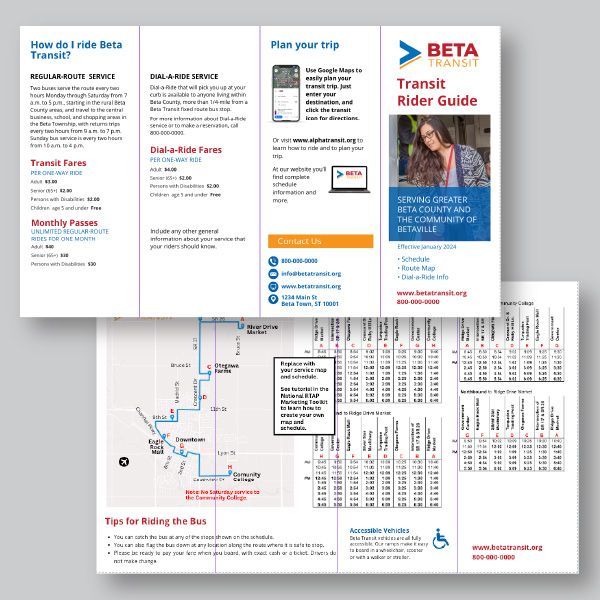
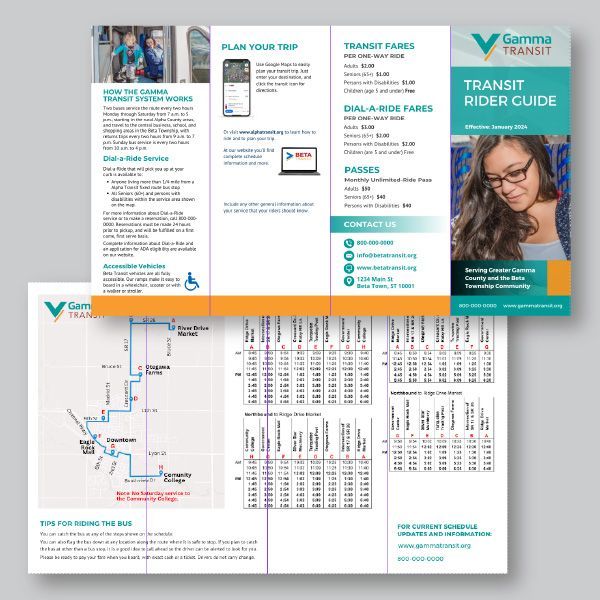
Rider Guides, Tabloid-size (11” x 17”)
With system map and multiple schedules. Good for systems with multiple routes.
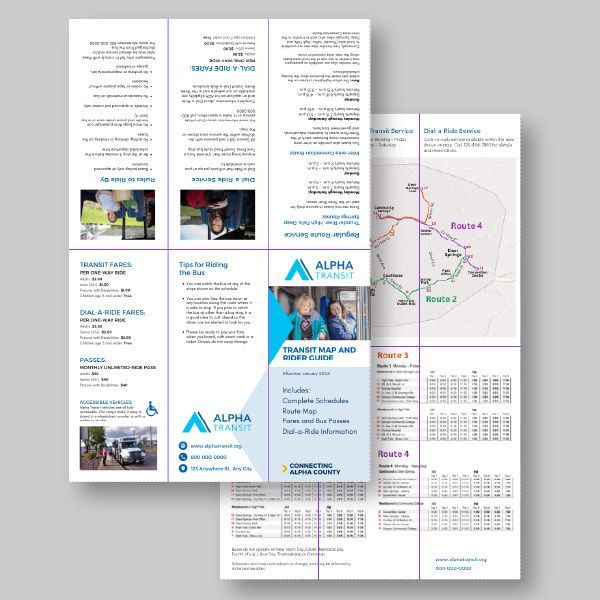
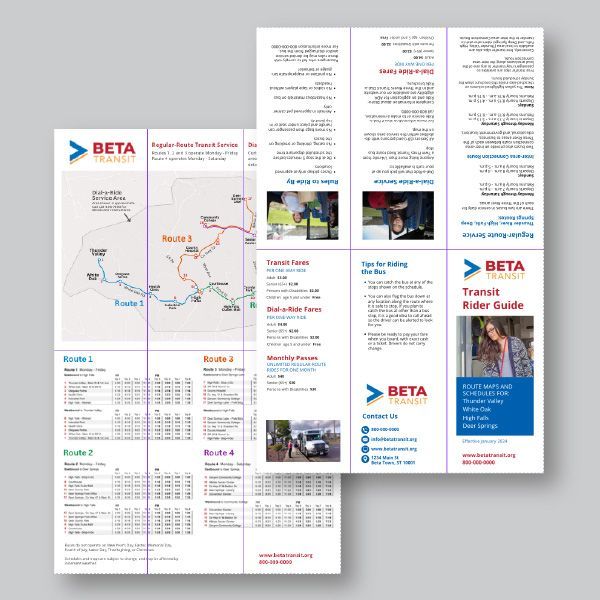
B - Rider Guide
Tabloid size (11" x 17") no bleed
Use Canva Template
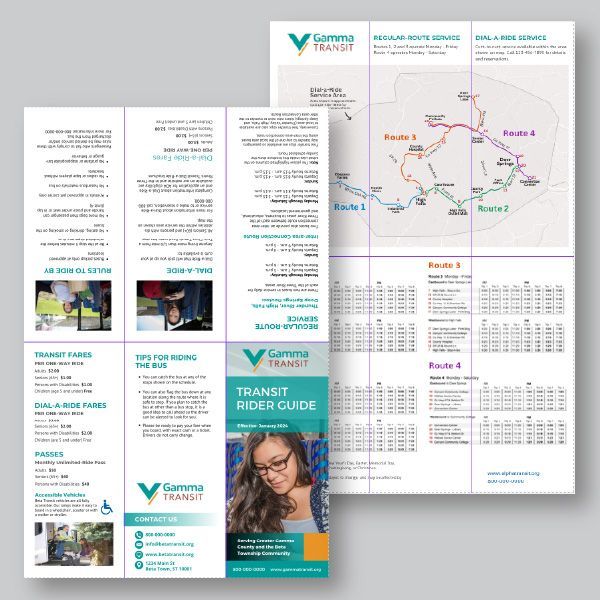
C - Rider Guide
Tabloid size (11" x 17") with bleed
Use Canva Template
Route Guides - Individual Routes
Individual route guides for systems with multiple routes. Each route guide has detailed route map and schedule for a single route.
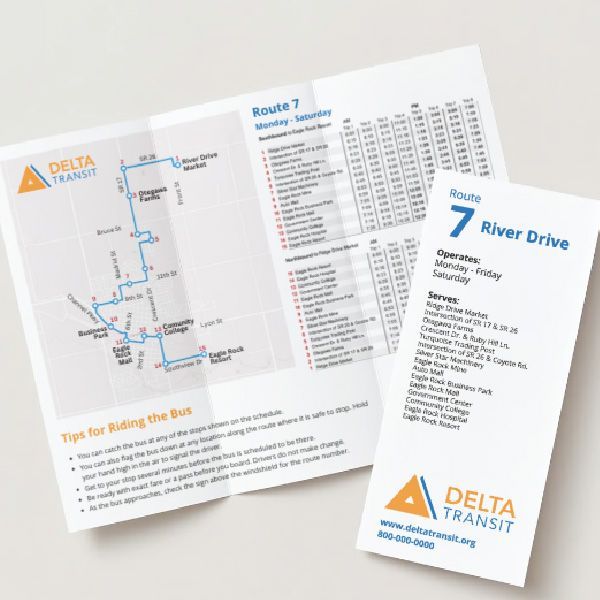
A - Route Guide
Letter size (8.5” x 11”) with bleed
Use Canva Template
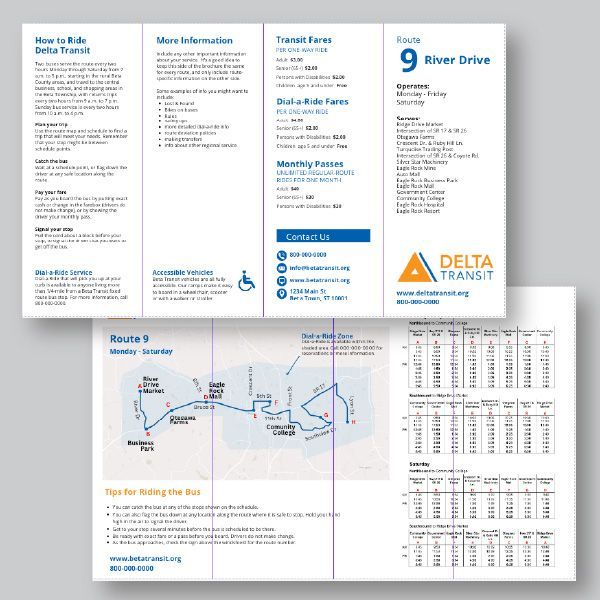
B - Route Guide
Legal size (8.5” x 14”) no bleed
Use Canva Template
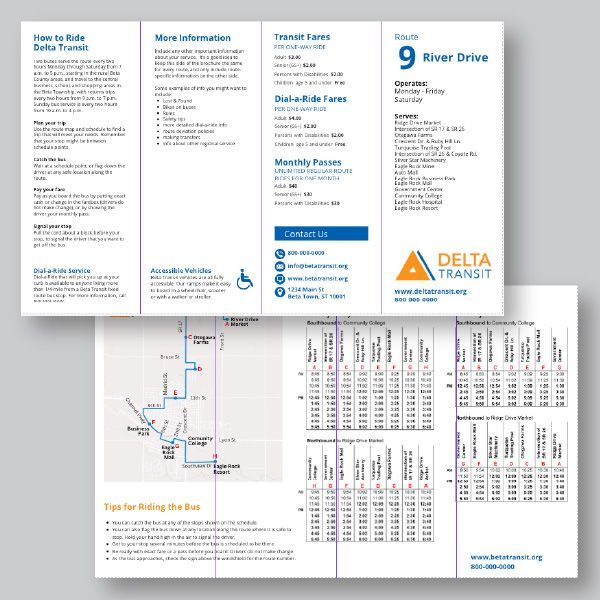
C - Route Guide
Legal size (8.5” x 14”) with bleed
Use Canva Template
Updated June 20, 2024

National RTAP offers one-stop shopping for rural and tribal transit technical assistance products and services. Call, email, or chat with us and if we can’t help with your request, we’ll connect you with someone who can!
" National RTAP offers one-stop shopping for rural and tribal transit technical assistance products and services. Call, email, or chat with us and if we can’t help with your request, we’ll connect you with someone who can! "
Robin Phillips, Executive Director
" You go above and beyond and I wanted to let you know that I appreciate it so much and always enjoy my time with you. The presentations give me so much to bring back to my agency and my subrecipients. "
Amy Rast, Public Transit Coordinator Vermont Agency of Transportation (VTrans)
" I always used the CASE (Copy And Steal Everything) method to develop training materials until I discovered RTAP. They give it to you for free. Use it! "
John Filippone, former National RTAP Review Board Chair
" National RTAP provides an essential service to rural and small transit agencies. The products are provided at no cost and help agencies maximize their resources and ensure that their employees are trained in all aspects of passenger service. "
Dan Harrigan, Former National RTAP Review Board Chair
" We were able to deploy online trip planning for Glasgow Transit in less than
90 days using GTFS Builder. Trip planning information displays in a riders'
native language, which supports gencies in travel training and meeting Title VI
mandates. "
Tyler Graham, Regional Transportation Planner Barren River Area Development District
Slide title
" Having a tool like GTFS Builder is really light years ahead of what it used to be at one time in terms of how fast you can put everything together. Our university students really can't imagine transit without it, so I think it's very important for us in terms of attracting that particular demographic. "
Michael Lachman, Transportation Services Manager HAPCAP - Athens Transit
Slide title
" In the past we used proprietary database software that was very challenging, very murky, and hard to update. GTFS Builder is a great opportunity to make this more user-friendly, more readily updatable and it
would enable us to show how to create a GTFS to more of the staff. "
Jaime McKay, Former Manager of Direct Services Center for Mobility Equity
Slide title
" Collaboration is a buzz word these days in the industry. On behalf of our Tribal segment, I appreciate RTAP for making Tribes a partner in industry opportunities. The organization goes over and beyond reaching partners one would not expect in a busy industry such as public transportation. Thank you for your tireless efforts! "
Franklin Akoneto, Comanche Nation
Slide title
"We are so very thankful for all your transportation training materials. Your resources are as valuable as gold!"
Holly Walton, Transportation Assistant Manager, Curative Connections
A program of the Federal Transit Administration administered by the Neponset Valley TMA
National RTAP is committed to making this website accessible to persons with disabilities. If you need assistance accessing any content on our website or need alternative formats for our materials, please contact us at info@nationalrtap.org or 781-404-5020.
by National RTAP |
